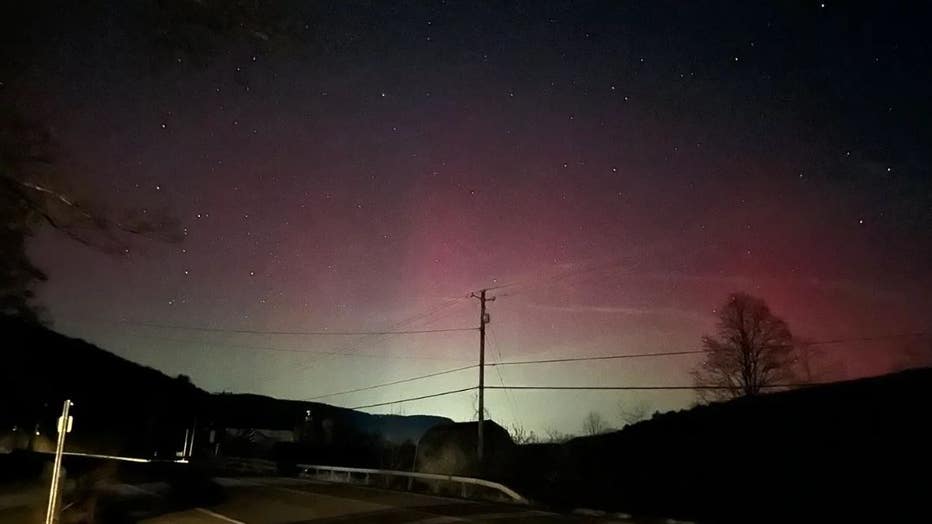Northern Lights to Put on Encore Performance Saturday Night
Cloud cover forecast for night of March 22, 2025.
The Northern Lights may be putting on an encore performance Saturday night after putting on a minor show Friday night, only this time the display has the potential to be longer and brighter.
A solar flare erupted from the sun on Friday and is zooming across space, forecast to reach Earth Saturday night and forecast to trigger a geomagnetic storm upon arrival.
What is a Geomagnetic Storm?
WHAT IS A GEOMAGNETIC STORM?
NOAA’s Space Weather Prediction Center has issued a Level 3 Geomagnetic Storm Watch on their 5-point scale, indicating a potentially “strong” storm.
“Watches at this level are infrequent, but not uncommon,” SWPC wrote. The solar storm isn’t predicted to reach the jaw-dropping levels of the level 4 and 5 storms in spring last year, but would still likely put on a decent show along the northern tier states as far south as Oregon, Iowa and inland New England.
Timing and Viewing Conditions
The timing is even working out well for nighttime viewing in much of the U.S. with peak aurora conditions expected between 10 p.m. and 1 a.m. ET (7-10 p.m. PT)
Heightened solar activity already brought a minor to moderate show Friday night, with photos of the aurora sent to FOX Weather from Upstate New York and from the northern Puget Sound region near Seattle.

Northern Lights appear over Berkshire, New York on March 21, 2025. (Brian Donegan / FOX Weather)
Categories of Geomagnetic Storms
WHAT ARE THE 5 CATEGORIES THAT MEASURE GEOMAGNETIC STORMS?
Saturday night’s show should be better if the solar forecast holds — and the weather forecast.
Clouds are expected across much of the north Saturday night with Seattle, Minneapolis and northern Maine nearly overcast. Odds are about 50-50 in Chicago and the Great Lakes and across the northern Rockies.
Impact of Geomagnetic Storms
Geomagnetic storms are harmless to human health, but stronger storms can bring communication issues such as radio blackouts and affect satellite operations. Level 3 storms are common enough that they usually pass without incident.
If you want to grab a peek at the aurora, the best viewing advice is to find a dark place away from city lights with a clear view of the northern horizon. In weak to moderate storms, it may be difficult to see the colorful lights with the naked eye or may appear washed out or faint, but using a camera on long exposure will bring out the sky colors more.
Conclusion
In conclusion, the Northern Lights are expected to put on an encore performance Saturday night, with a potentially stronger display than Friday night. The solar forecast and weather forecast are both looking favorable for a good show, so grab your camera and head to a dark spot with a clear view of the northern horizon to catch a glimpse of this natural phenomenon.
FAQs
Q: What is a geomagnetic storm?
A: A geomagnetic storm is a temporary disturbance of the Earth’s magnetic field, caused by a solar flare or coronal mass ejection.
Q: Are geomagnetic storms harmful to human health?
A: No, geomagnetic storms are harmless to human health, but they can cause communication issues and affect satellite operations.
Q: How can I view the Northern Lights?
A: The best viewing advice is to find a dark place away from city lights with a clear view of the northern horizon. Using a camera on long exposure can also help bring out the sky colors more.
Q: What are the 5 categories of geomagnetic storms?
A: The 5 categories of geomagnetic storms are measured on a scale from 1 to 5, with 1 being the weakest and 5 being the strongest.


